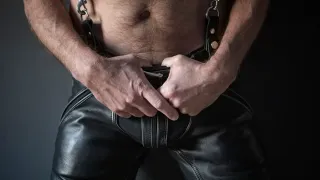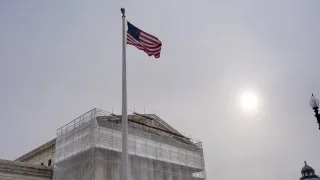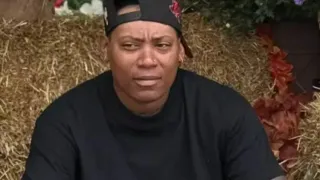March 21, 2023
Kehinde Wiley's 'An Archaeology of Silence' - Stunning New Exhibit at the de Young
Cornelius Washington READ TIME: 5 MIN.
Kehinde Wiley has been a very special, insightful artist for quite a while, but his work always appears fresh, modern and important, reshaping the way we see Black people in portraiture and sculpture.
"What I was always struck by whenever I saw his portraits was the degree to which they challenged our conventional view of power and privilege," President Barack Obama, a prominent portrait subject, has said of Wiley.
Lyrical and poetic elements comprise his latest exhibition at the de Young Museum, and the first to premiere his newest works of large-scale paintings and sculptures. The spacious exhibition directs focus on the works with dark green and red-painted walls, retaining a feeling of intimacy, even with the enormous awe-inspiring sculpture of a fallen man atop a horse.
In his works, Wiley investigates and questions how death and sacrifice have been portrayed across art history through a series of works that confront the silence surrounding systemic violence against Black people.
The romanticism and subtext are note-perfect, and the Bay Area is the place for it. The Civil Rights Movement of the 1960s, with the creation of the Black Panthers, the emergence of the Gay Liberation Movement of the '70s, the fight for a cure that still continues from the scourge of HIV/AIDS beginning in the '80s, up until the recent Black Lives Matter Movement and the new pandemic all serve as a backdrop for Mr. Wiley's art.
His massive portraits are color-drenched dense worlds of Black people reclining in deep backgrounds lush with leaves, flowers, branches, and vines in various degrees of bloom and decay.
The works are elegant reminders of vulnerability, uncertainty, and death, with mythological references in the poses and titles. They are a stunning contrast to the way we normally see people in fine art portraiture, especially young Black people.
Kehinde uses all of the visual signifiers of them in all of their glory, with their penchant of luxury sportswear, statement jewelry, and afro-centric hairstyles. Yet the subjects are posed in stillness, instead of the usual manic dynamic performative expressions of the way we normally see them as rappers, athletes, and fashion models.
Wiley's enhancement and extension of the techniques of the Old Masters of fine art (insert your favorite here) shows a great respect for the history and rigor of fine portraiture, and is a great example for all Black creatives in any discipline.
Wiley's command of technique is also evident in his sculptures. On a technical, social, and cultural level, he excels.
They say the Devil is in the details, but with Kahinde, the angels reside in the results, the perfect articulation of denim, the drape of the crucifix around the neck and onto the floor, the undone shoelaces on a pair of high top Nikes, and, lastly, the exquisite, lovingly executed textures of hair.
The scale of his work is a joy to behold, simultaneously grand and dark, mysterious, and revealing, dramatic but not glaring. Be prepared: Dramatically lit, this exhibit is extremely powerful.
For more sensitive attendees, it can be quite overwhelming emotionally, psychologically, and thematically. The subtext of mortality, impermanence, and death suggested in the exhibit may be triggering. The museum has thoughtfully provided a room for repast and recovery.
What this exhibit ultimately declares is that Kehinde Wiley is in the vanguard of 21st-century artists and personalities. He has created a body of work that is to be witnessed as well as viewed, experienced, and rabidly collected, and, most importantly, seriously studied as a serious critical affirmation of what it means to be Black, as an artist, as a subject, and as a people.
Kehinde Wiley's 'An Archaeology of Silence' through Oct. 15, 2023 at the de Young Museum, 50 Hagiwara Tea Garden Drive, Golden Gate Park. Tuesday–Sunday 9:30am – 5:15pm, free/$15. Audio tours available. www.famsf.org
Help keep the Bay Area Reporter going in these tough times. To support local, independent, LGBTQ journalism, consider becoming a BAR member.






